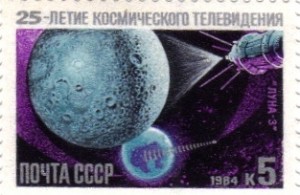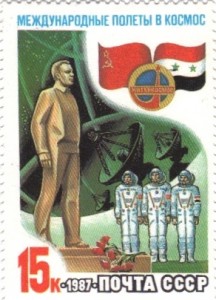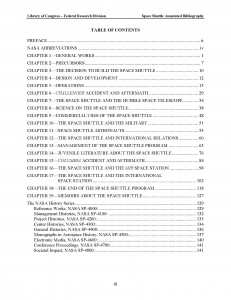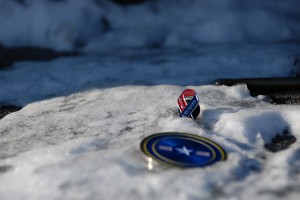
April 12, 1986, Cosmonautics Day stamp featuring Konstantin Tsiolovsky
Here are a few examples from a collection of space-themed postage stamps that I bought during my first trip to the Soviet Union in 1988. “Cosmonautics Day” marks the anniversary of Yuri Gagarin’s space flight on April 12, 1961. You might recognize the portrait of Soviet rocket theorist Konstantin Tsiolovsky (b. 1857-d. 1935) on this stamp from 1986—I’m not sure why, but in every photo I’ve seen, his mouth is open.
I’m also not sure why the 5 kopeck stamp follows a different design than the 10 and 15 kopeck stamps from the same year:

April 12, 1986, Cosmonautics Day stamp featuring Sergei Korolev
S. P. Korolev…hm…his father was Russian, his mother Ukrainian, so I’m not going to pin down his ethnicity, other than to say he spent most of his early life in Ukraine. This stamp is such a whitewash of Soviet atrocities. Korolev looked to have a promising career as an engineer ahead of him, but was arrested by the NKVD in 1938. He ended up in a gulag in Siberia. The positive: he lived to tell the tale. The negative: it ruined his life and health. Eventually, he was “rehabilitated,” i.e., the Soviet state realized it was losing the rocketry war to the Germans because they were killing all the smart people, and was forced to admit it the arrest was a mistake. Much of Soviet space and rocketry (and weaponry) success can be attributed to Korolev’s dedication. Much of Soviet space failure can be attributed to the fact he and other scientists died early deaths due to mistreatment in the gulag. Putting Korolev on a 10-kopeck stamp in 1986 = too little, too late, if you ask me.

April 12, 1986, Cosmonautics Day stamp featuring Yuri Gagarin and Vostok-1
The 15-kopeck stamp features an idealization of Yuri Gagarin on the left and a drawing of his spacecraft, Vostok-1, on the right. The text on the right say XXV Years: The World’s First Manned Space Flight. If you’ve been to VDNKh, you might recognize that rocket swoop on the left.

1984 Twenty-Five Years of Space Television
This 5-kopeck stamps celebrates the 25th anniversary of Luna-3, the USSR’s third lunar probe. Luna-3 deserves a stamp, since it sent back the first ever photos of the far side of the moon. This stamp reminds me how easy it is to get caught up in the early 21st-century narrative of U.S. dominance in space. Dark Side of the Moon, first brought to you by the Soviet Union, only second by Pink Floyd.
That brings me to the next stamp, which I can’t decipher just yet. It also celebrates the 25th anniversary of Luna-3, but seems to be doing it with an image of a space walk for repairs on solar panels. This is a 50-kopeck stamp, which is an incredible amount to pay for postage in 1984. This isn’t a stamp that would ever be used by Soviet citizens (most commemorative stamps weren’t, no matter what country printed them), so maybe it didn’t need to make sense, it only needed look cool so foreigners with hard currency would buy it.

1984, Twenty-Five Years of Space Television
Let me follow that with a set of stamps that has some relevance for current events:

1987 stamp celebrating Joint Soviet-Syrian Space Flight
In 1985, two Syrian astronauts began training for a mission to the Soviet space station Mir (МИР). In July 1987, Colonel Muhammad Ahmad Faris became the first Syrian in space, spending seven days aboard the space station. If that names sounds familiar, it may be because it was in the news recently. This past August, Faris defected to Turkey, declaring himself a member of the opposition. You’d think the Russian government would take that as a suggestion to reconsider its support for the Assad regime…

1987 International Space Flight, USSR-Syria
Probably only interesting to me: the red-and-gold circle in front of the Soviet-Syrian flags in the upper left of the 5-kopeck stamp (above) was also produced as a lapel pin. I know this because I own one. Only after looking at these stamps did I realize the “Intercosmos” symbol was part of the Soviet-Syrian love fest in space.

1987 International Space Flight, USSR-Syria
Without the flags, I wouldn’t have understood the 15-kopeck stamp (above). Nowhere does it say, “Syrians! With us!” but the astronaut on the right has a Syrian flag on his sleeve. I’m not sure whom the statue on the left represents. It looks more like Andrei Gromyko than Konstantin Chernenko, but it’s probably a Soviet rocket scientist, not a politician. I thought possibly cosmonaut Valery Ryumin, since he was the flight director for the joint mission, but the hair isn’t big enough.

1987 International Space Flight, USSR-Syria
This is my favorite Soviet-Syrian stamp. Five astronauts are hanging out on Mir, looking at a high-def image of architecture that looks like cross between the Umayyad Masjid and the Al Madraj building at Damascus University. Just in case you missed the purpose of the mission, arrows direct your attention from small likeness of Mir in the upper right corner to the locations of the USSR and Syria on a map.
I scanned the entire collection, so expect Part II sometime soon.






















